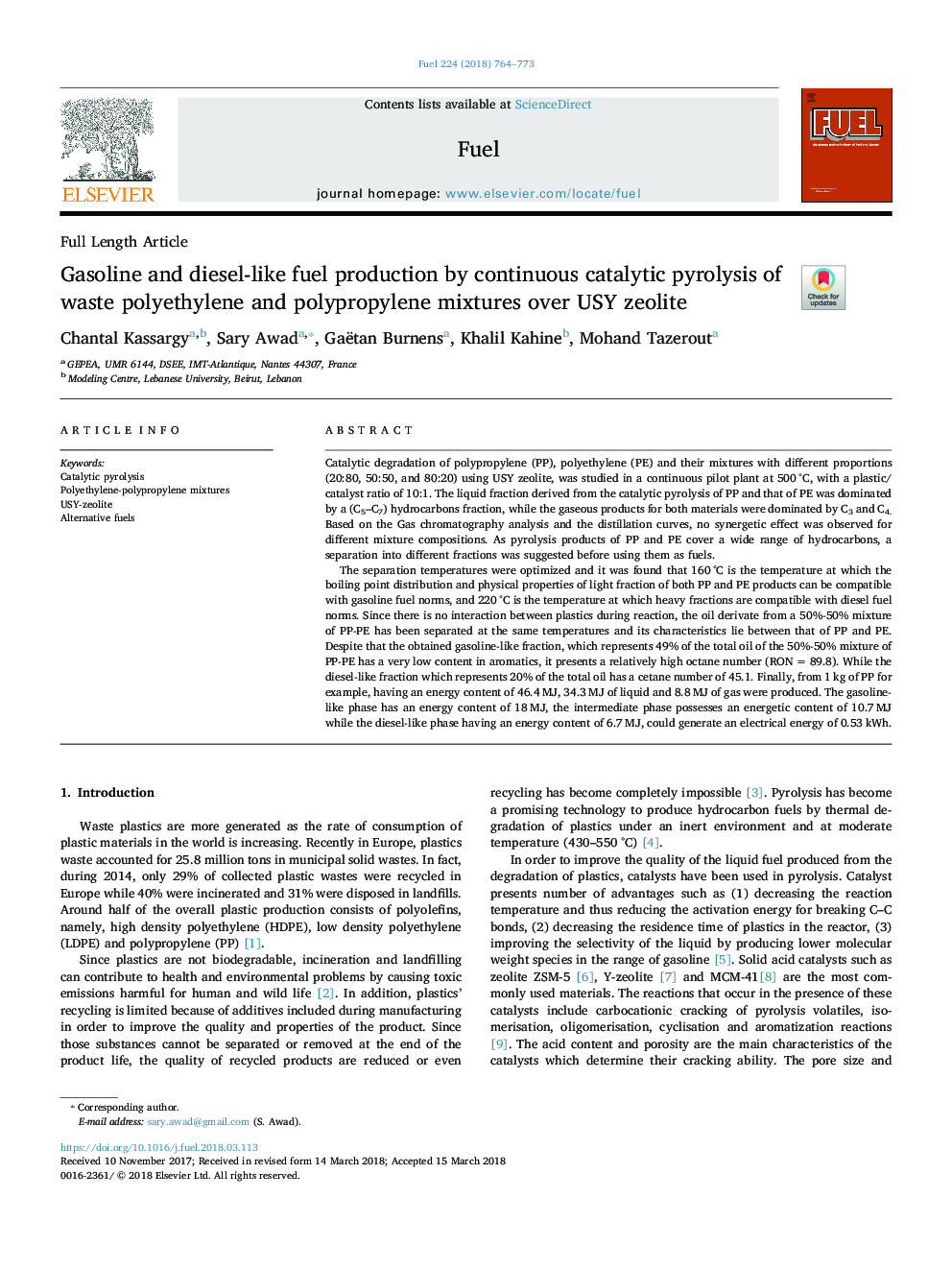| Article ID | Journal | Published Year | Pages | File Type |
|---|---|---|---|---|
| 6631230 | Fuel | 2018 | 10 Pages |
Abstract
The separation temperatures were optimized and it was found that 160â¯Â°C is the temperature at which the boiling point distribution and physical properties of light fraction of both PP and PE products can be compatible with gasoline fuel norms, and 220â¯Â°C is the temperature at which heavy fractions are compatible with diesel fuel norms. Since there is no interaction between plastics during reaction, the oil derivate from a 50%-50% mixture of PP-PE has been separated at the same temperatures and its characteristics lie between that of PP and PE. Despite that the obtained gasoline-like fraction, which represents 49% of the total oil of the 50%-50% mixture of PP-PE has a very low content in aromatics, it presents a relatively high octane number (RONâ¯=â¯89.8). While the diesel-like fraction which represents 20% of the total oil has a cetane number of 45.1. Finally, from 1â¯kg of PP for example, having an energy content of 46.4â¯MJ, 34.3â¯MJ of liquid and 8.8â¯MJ of gas were produced. The gasoline-like phase has an energy content of 18â¯MJ, the intermediate phase possesses an energetic content of 10.7â¯MJ while the diesel-like phase having an energy content of 6.7â¯MJ, could generate an electrical energy of 0.53â¯kWh.
Related Topics
Physical Sciences and Engineering
Chemical Engineering
Chemical Engineering (General)
Authors
Chantal Kassargy, Sary Awad, Gaëtan Burnens, Khalil Kahine, Mohand Tazerout,
